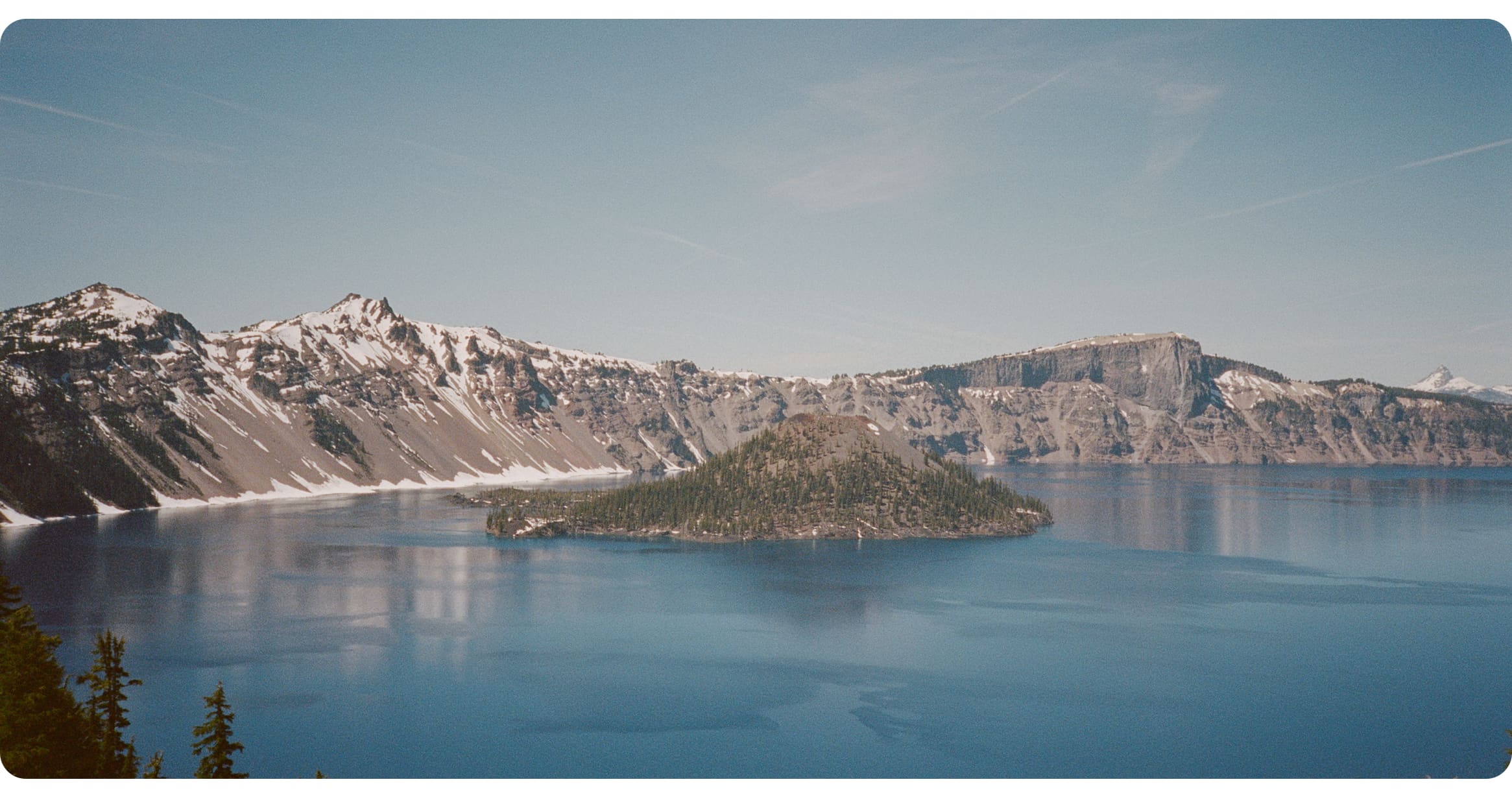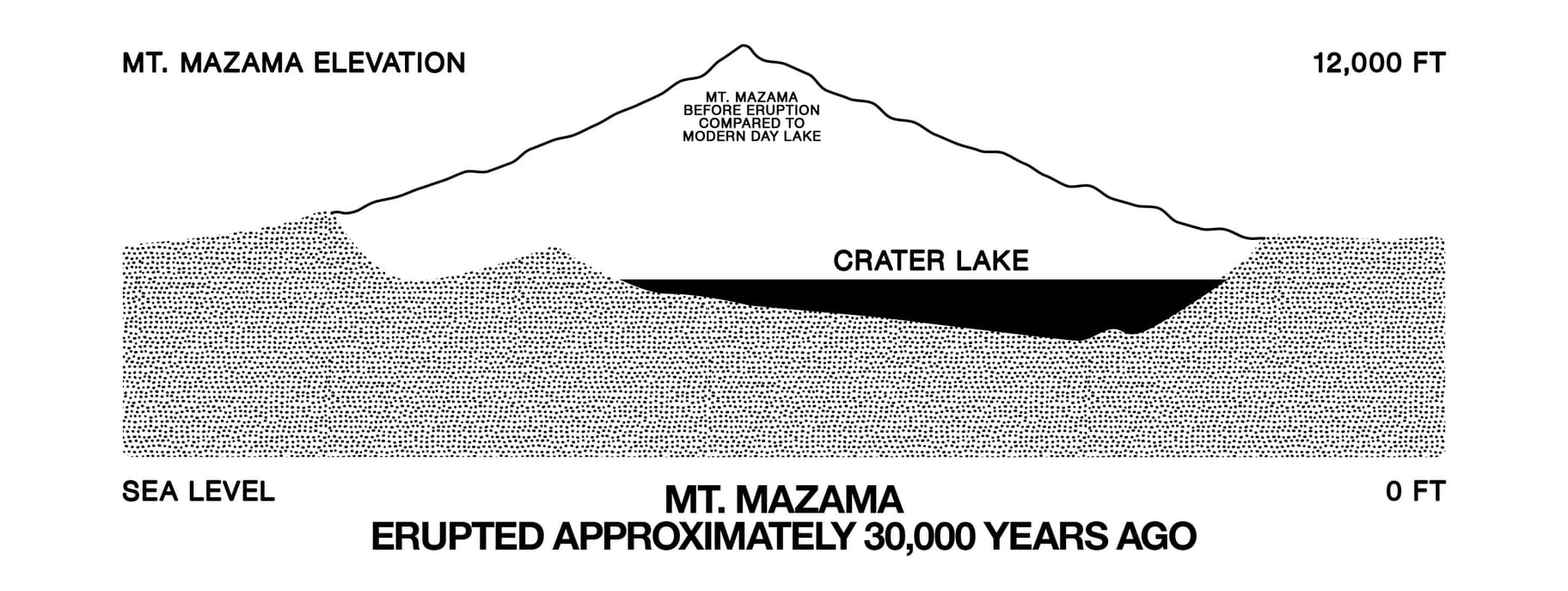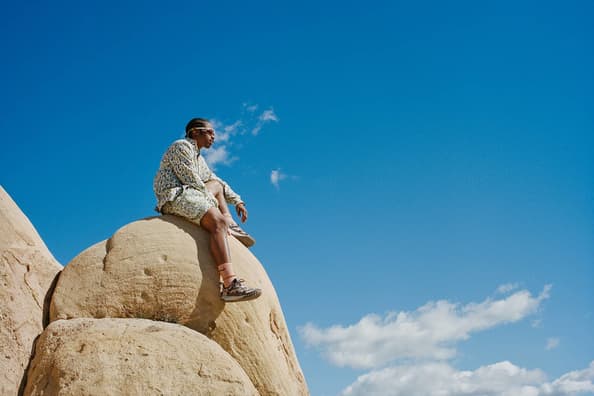
Behind the Design: Crater Lake, Oregon
Crater Lake was not formed by an asteroid, a comet or a meteor. Wait, wait, before you go, ask yourself: what’s the one thing that’s cooler than something crashing from space? How about: a 12,000 foot volcano exploding almost 8,000 years ago and collapsing upon itself? Yeah, that’s way cooler.

Such is the genesis of Crater Lake, located in the Southern part of Oregon. But let’s take a step back. This is ACG, reporting on another of nature’s wonders, the inspiration for our newest collection, Spring 2021. We didn’t have to go a long distance to find the lake, but considering its origins, looking out at the clear water feels a bit like traveling back in time. We hope our newest collection evokes a similar feeling in you.
Now, about that volcano… it was called Mount Mazama, and approximately 7,700 years ago, it fatefully erupted, forever changing the landscape of the Pacific Northwest. The eruption formed what’s known as a caldera, or a cauldron-like hollow area, underneath where the volcano used to be. Though not an actual crater, per se, this is in fact what gave Crater Lake its name. Several Spring ‘21 patterns have been named after Mazama and designed after the caldera’s unique shape.

Mazama’s explosion must have been quite a sight to see. We’re talking pumice and ash as far as you can imagine. They’ve even found particles of Mazama ash all the way over to Greenland. All told, there was an area of at least 1,000,000 sq. miles covered in at least 1mm thick ash. An enormous reservoir of magma, more than 3 miles below the earth’s surface, fed into this explosion, causing rapid collapse and ultimately, the caldera.

This is what made the area where Crater Lake sits today. But what made it so beautiful? Well, it only took a relatively short time, about 250 years, for rain and snowfall to fill the lake to its present level. Since then, nature has maintained a perfect balance using her trusty tricks of precipitation and evaporation. And because there are no lakes or other feeder systems into Crater Lake, there’s no sediment within, allowing the lake to maintain a crystal blue color year-round. We used that bluish hue on a number of our pieces for the season, including the Watchman Peak fishing capsule collection.

Fishing? Yep. But how could there be fish in Crater Lake? Fish don’t fall from the sky. Unless… no, you’re right. They don’t. In fact, fish were stocked in the lake starting about 130 years ago, and today the lake supports a number of kokanee salmon and rainbow trout. You can go fishing at Crater Lake and in surrounding streams. You can even fish off the dock at Wizard Island.

Ah, shoot. We haven’t even gotten to Wizard Island yet. You’re gonna wanna hear about Wizard Island. Ok so, basically, picture an island that looks like a giant wizard’s hat. There you go, just like the one painted on the side of your van. It was formed from hot cinders that expelled from the volcano sometime after the large explosion. This is called a cinder cone, and Wizard Island is considered the most beautiful one in the whole wide world. Though nobody lives on Wizard Island, you can visit by boat and hike some of the island. We memorialized the island in our collection, too.

Scientists believe that, due to hydrothermal activity at the bottom of Crater Lake, it’s possible Mount Mazama may erupt again. And since the “big one”, there have been smaller volcanic events under the lake. Spring is here; best that you stay on your toes. Nature can change in an instant, which is a fact we don’t take lightly. It’s why we’re called All Conditions Gear, and it’s why we make our stuff to last in any environment.


